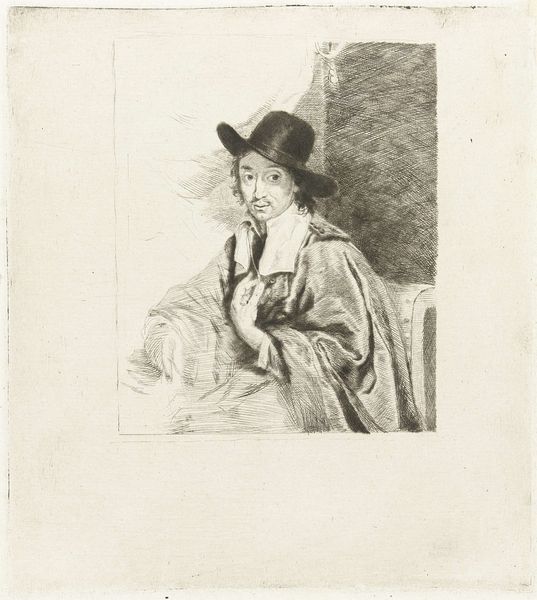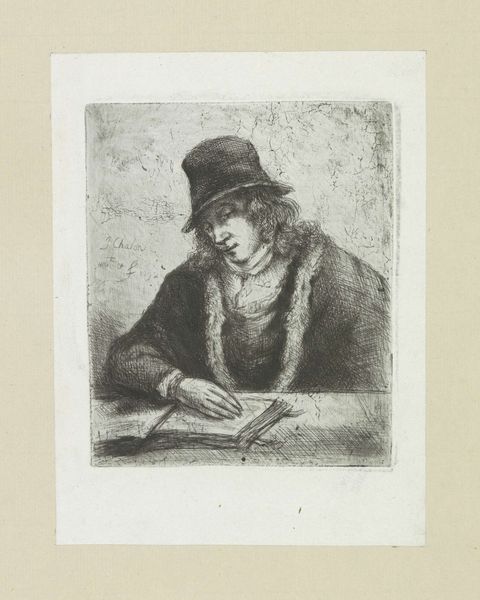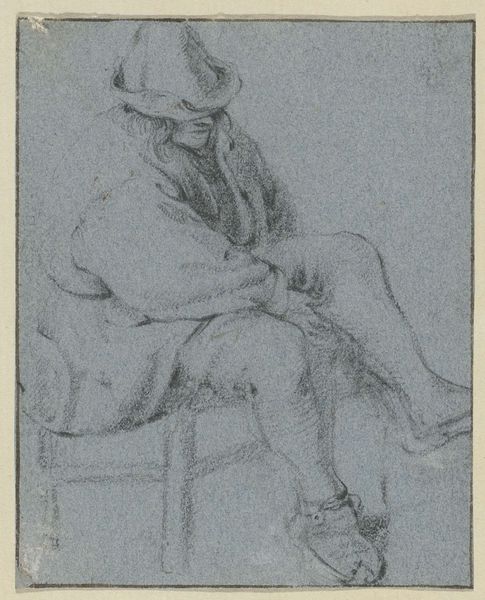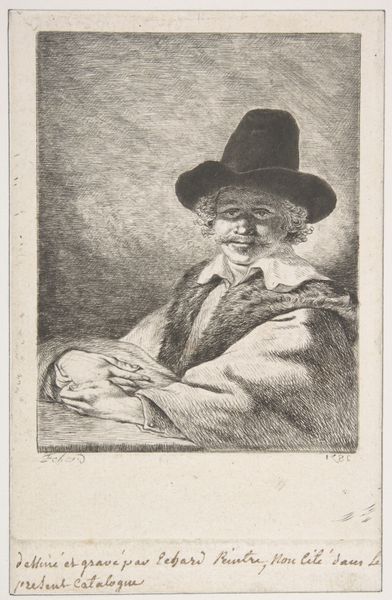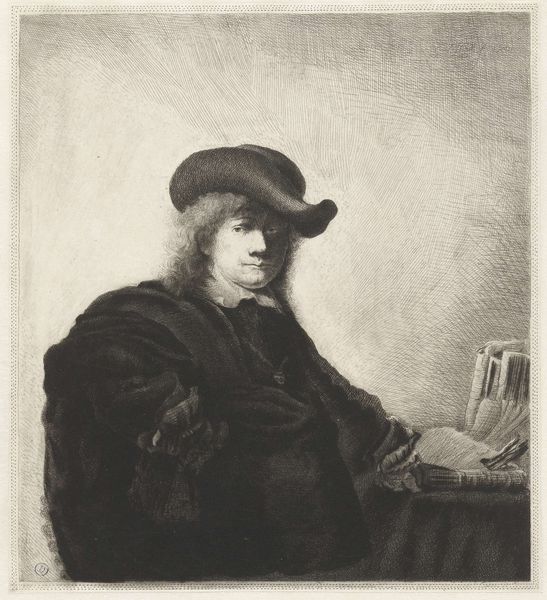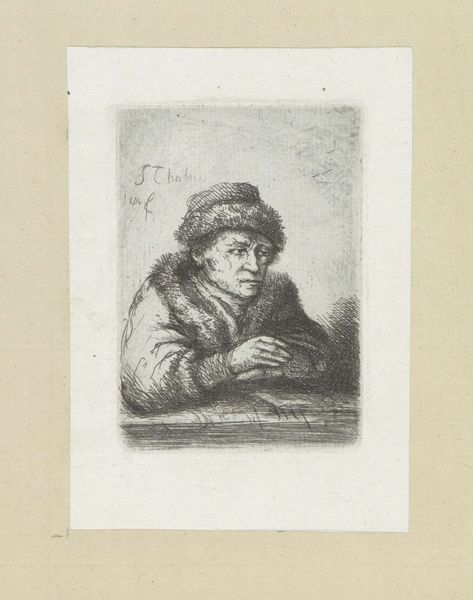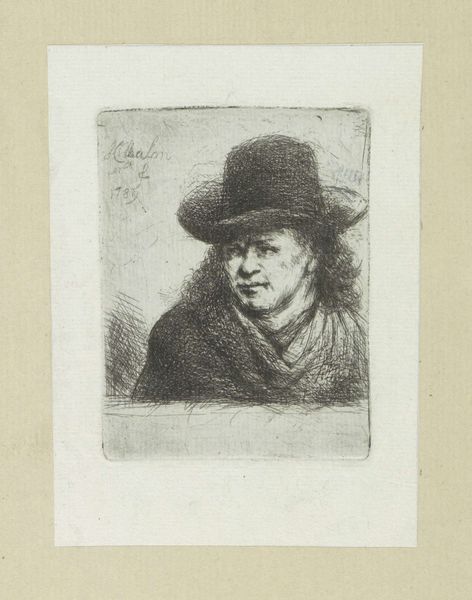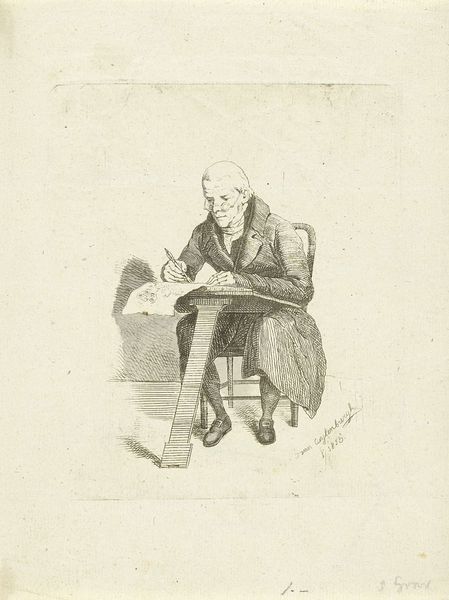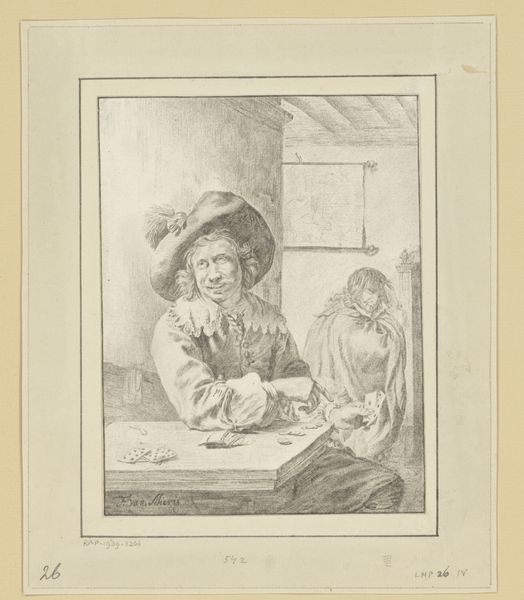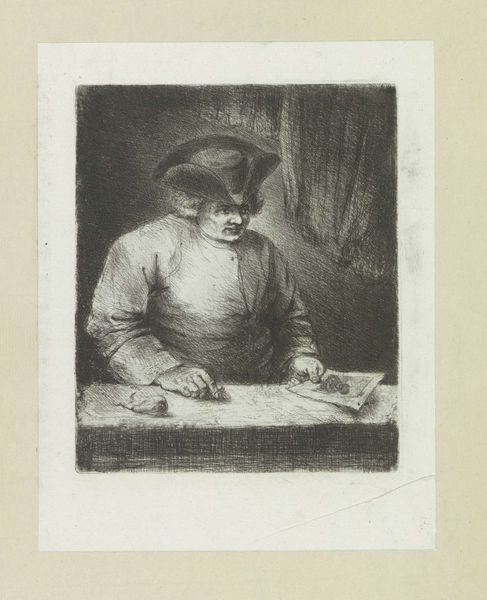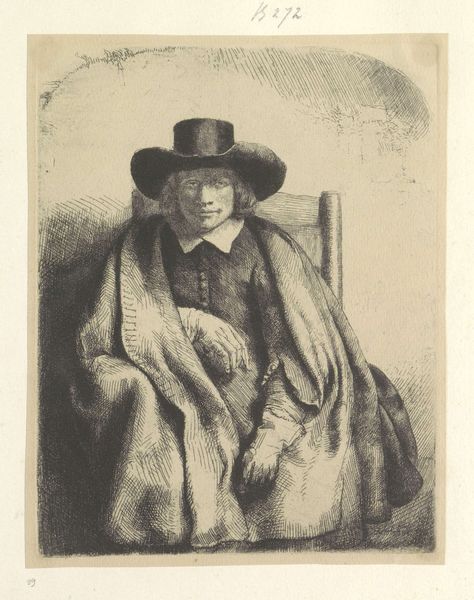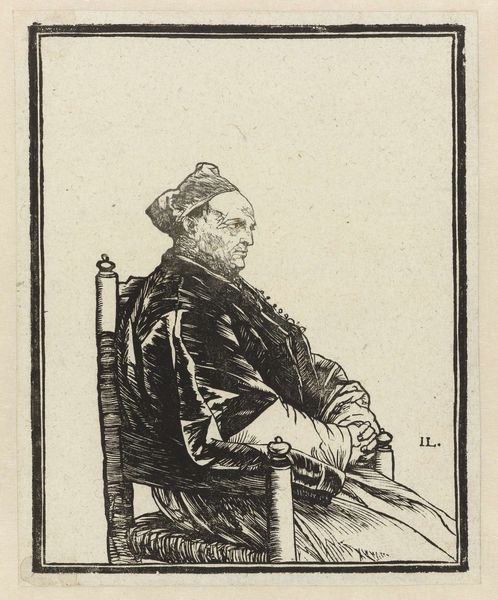
print, etching
#
portrait
#
self-portrait
#
baroque
# print
#
etching
Dimensions: height 195 mm, width 155 mm
Copyright: Rijks Museum: Open Domain
Thomas Worlidge created this self-portrait in 1764 using etching, a printmaking technique where lines are incised into a metal plate with acid, then inked and printed. Look closely, and you’ll see how Worlidge uses this process to mimic the texture and tonality of a chalk drawing. This was no accident. The artist, working in the eighteenth century, would have been acutely aware of etching’s unique potential. It allowed for the relatively easy mass production of images, simulating the effect of unique works on paper. In this self-portrait, Worlidge is surrounded by the tools of his trade, including an easel and a classical bust. He depicts himself in a fur-lined robe, suggesting his status as a successful artist. The etching process itself, with its reliance on both skilled handwork and chemical reactions, reflects a tension between artistic vision and industrial production. Ultimately, this print invites us to consider how art, even in its most seemingly personal forms, is always shaped by the technologies and economic forces of its time.
Comments
No comments
Be the first to comment and join the conversation on the ultimate creative platform.
